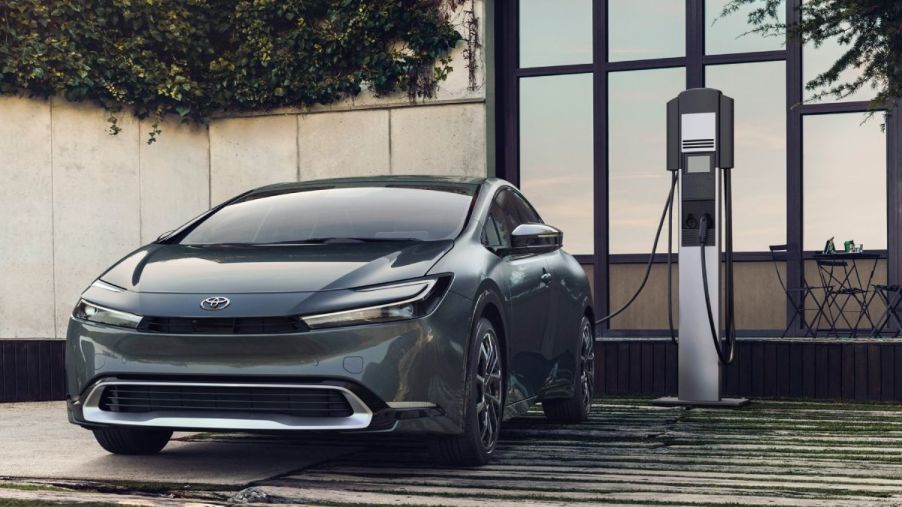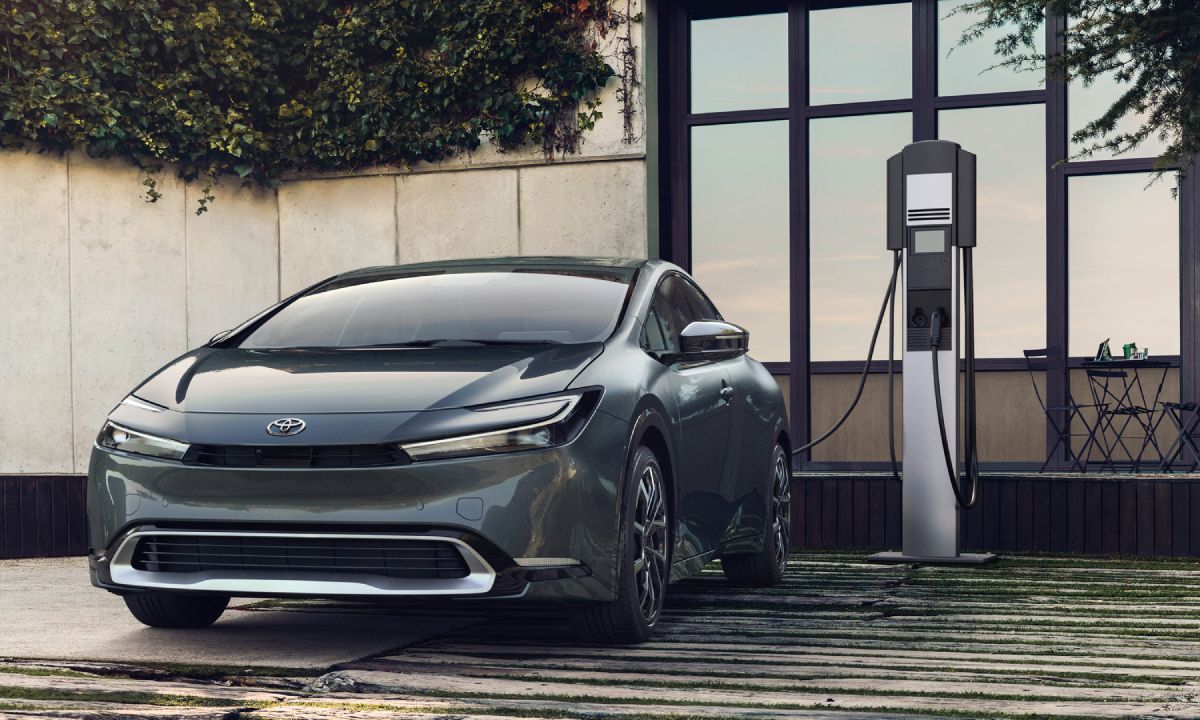
5 Facts You Need to Know About the All-New 2023 Toyota Prius Prime
Through two generations, the Toyota Prius Prime has presented Prius buyers with a plug-in option for transportation. Although it only had an all-electric of 25 miles, the overall fuel economy was impressive. Yet, as EVs are becoming mainstream, the Prius Prime lost favor with some eco-minded commuters.
To garner favor, Toyota has gone back to the drawing board in a big way. Culminating in a complete redesign, a new battery, and engine, and many other revamped characteristics, the third-generation model is stunning. Here are five things you need to know about the all-new 2023 Toyota Prius Prime.

The new 2023 Toyota Prius Prime got a makeover
The Toyota Prius Prime, as always—and quite unfortunately—looked like the Prius. However, those days are in the past. Exuding a “flowing, one-motion silhouette” appearance, as Toyota calls it, the Prius Prime is now ‘gorgeously-athletic’.
In fact, passersby may assume the Prius Prime is now a two-door coupe. However, the designers cleverly hid the rear door handle in the window trim to enhance the sleek, teardrop look.
Using their second-generation TNGA-C architecture, Toyota made the Prius Prime look much sportier. Compared to the previous generation, it’s two inches lower, one inch wider, and one inch longer. The altered structure allows the battery pack to be placed lower, allowing for better luggage capacity and on-road handling.
50% increase in electric-only range
The previous Prius Prime’s 25-mile electric-only range wasn’t impressive by today’s standards. To battle against shoppers selecting competitor EVs, the new model’s range is 50% more than before. A larger lithium-ion battery now promises around 38 miles of electric driving range.
Nevertheless, the hybrid system has also been upgraded. The fifth-generation hybrid system will achieve 57 mpg, per Toyota. The battery pack offers a 15% increase in output compared to the previous generation nickel-metal-hydride unit.
The Prius Prime offers a whopping 220 horsepower
Drivetrains for Prius Primes have always been based on efficiency. While that hasn’t changed for the third-generation model, it’s much more powerful. The regular Prius now puts down an impressive 194 hp—196 hp in all-wheel drive models.
The Prius Prime comes with the same 2.0-liter four-cylinder, which replaces the old 1.8-liter. Yet, it packs more power than the hybrid system—a whopping 220 hp. The front-wheel drive-only Prius Prime can now achieve 0-60 mph in a remarkable 6.6 seconds.
The all-new Prius Prime is powered by the Sun (sort of)
There are many similarities between the Prius and Prius Prime. While the two differ in drivetrain, not all power enhancements are found in the hybrid system, though. The Prius Prime can also be powered by the Sun—at least the in-cabin electronics can.
Featured on the Prius Prime is a set of roof-mounted solar panels. While they won’t recharge the car’s battery, they provide additional power for its accessories and the six USB ports.
For example, they will power the radio, the smartphone charger while parked, and the air conditioning while on the move. Toyota also implemented a clever design that conceals the electrodes for a seamless, glossy appearance for the liftback.
Traffic Jam Assist will make commuting stress-free
As a first for Toyota and the Prius Prime, a Traffic Jam Assist feature is integrated with the latest Toyota Safety Sense system. To take the stress out of traveling in a traffic jam where stop-and-go driving is prevailing, the Prius Prime can drive itself.
When highway driving with Dynamic Radar Cruise Control and Lane Tracing Assist activated, the Prius Prime will leap into action. Under 25 mph, the system will provide acceleration, braking, and hands-free steering control under the driver’s supervision.
The Prius Prime’s driver monitor camera must confirm the driver has their eyes on the road to engage hands-free operation. When traffic speed increases beyond 25 miles per hour, the system will prompt the driver to take control of the vehicle.
Should you buy a 2023 Toyota Prius Prime over the competition?
Toyota has not released prices, but the Prius Prime should start at around $30,000 with the base SE model. The top-of-the-line XSE Premium trim level may dip into the $40,000 range. As it goes on sale later this year, it will likely remain one of the lesser expensive plug-in hybrids in the segment.
The only others to be had for less money are the Kia Niro and Hyundai Ioniq plug-ins. However, the Prius Prime now offers a more extended electric-only range.


